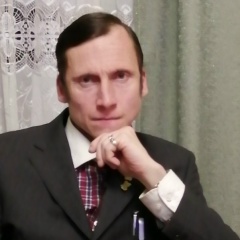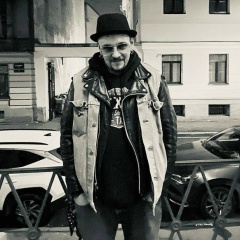Непосредственной причиной смерти Вахтина стала острая сердечная недостаточность. А сердце остановилось из-за удара в сонную артерию. Как пишут эксперты, «предметом, от которого образовались повреждения шеи и лица, могла быть кисть руки, сжатая в кулак». Как видно на записи камеры наблюдения, примерно в это место и наносил удар хирург.
«Развитие острой сердечной недостаточности у гражданина Вахтина было проявлением рефлекторной остановки сердца в результате травматизации области каротидного синуса слева, — указано в заключении. — Между причинением Вахтину тупой травмы шеи и наступлением его смерти имеется прямая причинная связь».
Каротидный синус — место разветвления сонной артерии на внешнюю и внутреннюю. Считается одним из важнейших узлов сосудистой системы человека. Он расположен около уха, сразу под челюстью, и его функция — регулировать давление в сосудах и частоту пульса. Даже при обычном сдавливании этой зоны у здорового человека может понизиться пульс — например, если слишком туго завязать галстук.
После удара хирурга в эту область у Вахтина фактически мгновенно снизился пульс до 20 ударов в минуту, затем развилась аритмия и остановилось сердце. При этом произошло кровоизлияние из сонной артерии в мышцы шеи — на пол Вахтин падал уже без сознания.
Вторая травма, которую получил Вахтин и которая также способствовала летальному исходу, связана с его падением. Потерпевший упал, ударившись головой об пол, от чего получил закрытую черепно-мозговую травму: перелом затылочной кости с переходом на основание черепа. После этого очень быстро развился отек мозга. Эксперты не связывают отек напрямую с наступлением смерти, но указывают, что отек мозга «способствовал ее наступлению».
Эксперты особо отмечают, что травма каротидного синуса и перелом костей черепа по отдельности причинили здоровью Вахтина тяжкий вред, опасный для его жизни. Кроме того, при падении Вахтин получил третью травму — перелом седьмого шейного позвонка. Сам по себе этот перелом для жизни не опасен, он причинил вред здоровью средней тяжести. Однако при комбинации этих трех основных травм, указывают эксперты, Вахтин скончался, прожив 1 час 12 минут.
Таким образом, заключение экспертов фактически полностью подтвердило версию следствия о виновности хирурга в гибели пациента.
— Зелендинов, осознавая преступный характер своих действий и испытывая чувство мести за якобы умышленные действия Вахтина, и действуя умышленно с целью причинения вреда здоровью, обладая явным физическим превосходством, безразлично относясь к последствиям своего опасного поведения, с большой силой нанес Вахтину удар рукой в область головы, — ранее сообщал один из следователей по делу. — Имея медицинское образование и опыт работы врачом, Зелендинов достоверно знал о возможных последствиях в виде причинения тяжкого вреда здоровью.
До сих пор точно неизвестно, почему взорвался хирург. Однако прокуратура выяснила, что Зелендинов за 2015 год отработал сверхурочно 468 часов, что в три раза превышает годовую норму, установленную Трудовым кодексом.
Медика обвиняют по ст. 111 УК РФ («Умышленное причинение тяжкого вреда здоровью, повлекшее смерть»). За это ему грозит до 15 лет лишения свободы. 27 января Следственный комитет возбудил еще одно дело на Зелендинова по ст.е 116 УК РФ («Побои») за то, что хирург нанес несколько десятков ударов сопровождавшему Вахтина Александру Авилову. Уже известно, что хирург ранее попадал в поле зрения правоохранительных органов. В 2014 году он привлекался по административной статье за неповиновение сотрудникам полиции и отказ от выполнения их законных требований.
Защита врача отвергает версию следствия.
— Зелендинов не целился именно в эту зону, это произошло совершенно случайно. Единственный удар оказался роковым по стечению обстоятельств. Например, он нанес другу Вахтина Авилову гораздо больше ударов, однако не причинил тому даже легкого вреда здоровью
«Развитие острой сердечной недостаточности у гражданина Вахтина было проявлением рефлекторной остановки сердца в результате травматизации области каротидного синуса слева, — указано в заключении. — Между причинением Вахтину тупой травмы шеи и наступлением его смерти имеется прямая причинная связь».
Каротидный синус — место разветвления сонной артерии на внешнюю и внутреннюю. Считается одним из важнейших узлов сосудистой системы человека. Он расположен около уха, сразу под челюстью, и его функция — регулировать давление в сосудах и частоту пульса. Даже при обычном сдавливании этой зоны у здорового человека может понизиться пульс — например, если слишком туго завязать галстук.
После удара хирурга в эту область у Вахтина фактически мгновенно снизился пульс до 20 ударов в минуту, затем развилась аритмия и остановилось сердце. При этом произошло кровоизлияние из сонной артерии в мышцы шеи — на пол Вахтин падал уже без сознания.
Вторая травма, которую получил Вахтин и которая также способствовала летальному исходу, связана с его падением. Потерпевший упал, ударившись головой об пол, от чего получил закрытую черепно-мозговую травму: перелом затылочной кости с переходом на основание черепа. После этого очень быстро развился отек мозга. Эксперты не связывают отек напрямую с наступлением смерти, но указывают, что отек мозга «способствовал ее наступлению».
Эксперты особо отмечают, что травма каротидного синуса и перелом костей черепа по отдельности причинили здоровью Вахтина тяжкий вред, опасный для его жизни. Кроме того, при падении Вахтин получил третью травму — перелом седьмого шейного позвонка. Сам по себе этот перелом для жизни не опасен, он причинил вред здоровью средней тяжести. Однако при комбинации этих трех основных травм, указывают эксперты, Вахтин скончался, прожив 1 час 12 минут.
Таким образом, заключение экспертов фактически полностью подтвердило версию следствия о виновности хирурга в гибели пациента.
— Зелендинов, осознавая преступный характер своих действий и испытывая чувство мести за якобы умышленные действия Вахтина, и действуя умышленно с целью причинения вреда здоровью, обладая явным физическим превосходством, безразлично относясь к последствиям своего опасного поведения, с большой силой нанес Вахтину удар рукой в область головы, — ранее сообщал один из следователей по делу. — Имея медицинское образование и опыт работы врачом, Зелендинов достоверно знал о возможных последствиях в виде причинения тяжкого вреда здоровью.
До сих пор точно неизвестно, почему взорвался хирург. Однако прокуратура выяснила, что Зелендинов за 2015 год отработал сверхурочно 468 часов, что в три раза превышает годовую норму, установленную Трудовым кодексом.
Медика обвиняют по ст. 111 УК РФ («Умышленное причинение тяжкого вреда здоровью, повлекшее смерть»). За это ему грозит до 15 лет лишения свободы. 27 января Следственный комитет возбудил еще одно дело на Зелендинова по ст.е 116 УК РФ («Побои») за то, что хирург нанес несколько десятков ударов сопровождавшему Вахтина Александру Авилову. Уже известно, что хирург ранее попадал в поле зрения правоохранительных органов. В 2014 году он привлекался по административной статье за неповиновение сотрудникам полиции и отказ от выполнения их законных требований.
Защита врача отвергает версию следствия.
— Зелендинов не целился именно в эту зону, это произошло совершенно случайно. Единственный удар оказался роковым по стечению обстоятельств. Например, он нанес другу Вахтина Авилову гораздо больше ударов, однако не причинил тому даже легкого вреда здоровью
The immediate cause of Vakhtin's death was acute heart failure. And my heart stopped because of a blow to the carotid artery. As experts write, "the object from which the damage to the neck and face was formed could be a hand clenched into a fist." As can be seen on the surveillance camera footage, the surgeon struck at about this place.
“The development of acute heart failure in citizen Vakhtin was a manifestation of reflex cardiac arrest as a result of trauma to the carotid sinus area on the left,” the conclusion says. "There is a direct causal link between the infliction of a blunt neck injury to Vakhtin and the onset of his death."
The carotid sinus is the place of branching of the carotid artery into the external and internal. It is considered one of the most important nodes of the human vascular system. It is located near the ear, just below the jaw, and its function is to regulate blood pressure and pulse rate. Even with the usual squeezing of this zone in a healthy person, the pulse may drop - for example, if you tie a tie too tightly.
After the surgeon hit this area, Vakhtin's pulse almost instantly dropped to 20 beats per minute, then arrhythmia developed and his heart stopped. At the same time, a hemorrhage from the carotid artery into the muscles of the neck occurred - Vakhtin fell to the floor unconscious.
The second injury that Vakhtin received and which also contributed to the death is associated with his fall. The victim fell, hitting his head on the floor, from which he received a closed craniocerebral injury: a fracture of the occipital bone with a transition to the base of the skull. After that, cerebral edema developed very quickly. Experts do not directly associate edema with death, but point out that cerebral edema "contributed to its onset."
Experts emphasize that the trauma of the carotid sinus and the fracture of the skull bones separately caused serious harm to Vakhtin's health, dangerous to his life. In addition, during the fall, Vakhtin received a third injury - a fracture of the seventh cervical vertebra. By itself, this fracture is not dangerous for life, it caused harm to health of moderate severity. However, with a combination of these three main injuries, experts point out, Vakhtin died after living for 1 hour and 12 minutes.
Thus, the expert opinion actually fully confirmed the version of the investigation about the surgeon's guilt in the death of the patient.
- Zelendinov, realizing the criminal nature of his actions and feeling a sense of revenge for the allegedly deliberate actions of Vakhtin, and acting deliberately with the aim of causing harm to health, possessing a clear physical superiority, indifferent to the consequences of his dangerous behavior, with great force struck Vakhtin with his hand in the head area , - previously reported by one of the investigators in the case. - Having medical education and experience as a doctor, Zelendinov reliably knew about the possible consequences in the form of causing serious harm to health.
It is still not known exactly why the surgeon exploded. However, the prosecutor's office found out that Zelendinov worked 468 hours overtime in 2015, which is three times the annual rate established by the Labor Code.
The medic is accused under Art. 111 of the Criminal Code of the Russian Federation (“Intentional infliction of grievous bodily harm resulting in death”). For this he faces up to 15 years in prison. On January 27, the Investigative Committee opened another case against Zelendinov under article 116 of the Criminal Code of the Russian Federation ("Beating") for the fact that the surgeon inflicted several dozen blows to Alexander Avilov, who was accompanying Vakhtin. It is already known that the surgeon has previously come to the attention of law enforcement agencies. In 2014, he was prosecuted under an administrative article for disobeying police officers and refusing to comply with their legal requirements.
The doctor's defense rejects the version of the investigation.
- Zelendinov did not aim at this particular zone, it happened quite by accident. The only blow was fatal by coincidence. For example, he inflicted much more blows on Vakhtin's friend Avilov, but did not cause him even slight harm to his health.
“The development of acute heart failure in citizen Vakhtin was a manifestation of reflex cardiac arrest as a result of trauma to the carotid sinus area on the left,” the conclusion says. "There is a direct causal link between the infliction of a blunt neck injury to Vakhtin and the onset of his death."
The carotid sinus is the place of branching of the carotid artery into the external and internal. It is considered one of the most important nodes of the human vascular system. It is located near the ear, just below the jaw, and its function is to regulate blood pressure and pulse rate. Even with the usual squeezing of this zone in a healthy person, the pulse may drop - for example, if you tie a tie too tightly.
After the surgeon hit this area, Vakhtin's pulse almost instantly dropped to 20 beats per minute, then arrhythmia developed and his heart stopped. At the same time, a hemorrhage from the carotid artery into the muscles of the neck occurred - Vakhtin fell to the floor unconscious.
The second injury that Vakhtin received and which also contributed to the death is associated with his fall. The victim fell, hitting his head on the floor, from which he received a closed craniocerebral injury: a fracture of the occipital bone with a transition to the base of the skull. After that, cerebral edema developed very quickly. Experts do not directly associate edema with death, but point out that cerebral edema "contributed to its onset."
Experts emphasize that the trauma of the carotid sinus and the fracture of the skull bones separately caused serious harm to Vakhtin's health, dangerous to his life. In addition, during the fall, Vakhtin received a third injury - a fracture of the seventh cervical vertebra. By itself, this fracture is not dangerous for life, it caused harm to health of moderate severity. However, with a combination of these three main injuries, experts point out, Vakhtin died after living for 1 hour and 12 minutes.
Thus, the expert opinion actually fully confirmed the version of the investigation about the surgeon's guilt in the death of the patient.
- Zelendinov, realizing the criminal nature of his actions and feeling a sense of revenge for the allegedly deliberate actions of Vakhtin, and acting deliberately with the aim of causing harm to health, possessing a clear physical superiority, indifferent to the consequences of his dangerous behavior, with great force struck Vakhtin with his hand in the head area , - previously reported by one of the investigators in the case. - Having medical education and experience as a doctor, Zelendinov reliably knew about the possible consequences in the form of causing serious harm to health.
It is still not known exactly why the surgeon exploded. However, the prosecutor's office found out that Zelendinov worked 468 hours overtime in 2015, which is three times the annual rate established by the Labor Code.
The medic is accused under Art. 111 of the Criminal Code of the Russian Federation (“Intentional infliction of grievous bodily harm resulting in death”). For this he faces up to 15 years in prison. On January 27, the Investigative Committee opened another case against Zelendinov under article 116 of the Criminal Code of the Russian Federation ("Beating") for the fact that the surgeon inflicted several dozen blows to Alexander Avilov, who was accompanying Vakhtin. It is already known that the surgeon has previously come to the attention of law enforcement agencies. In 2014, he was prosecuted under an administrative article for disobeying police officers and refusing to comply with their legal requirements.
The doctor's defense rejects the version of the investigation.
- Zelendinov did not aim at this particular zone, it happened quite by accident. The only blow was fatal by coincidence. For example, he inflicted much more blows on Vakhtin's friend Avilov, but did not cause him even slight harm to his health.
У записи 3 лайков,
4 репостов.
4 репостов.
Эту запись оставил(а) на своей стене Максим Козырев
























